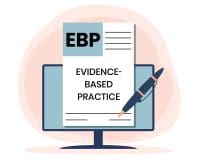Recycling has become an essential tool for protecting the environment, with most of us embracing it as we strive to “do our part” for the health of the planet. But when it comes to publishing, recycling text can be problematic from both a legal and an ethical perspective. Here are a few answers to common questions about text recycling to help you meet publication standards.
What is text recycling?
Text recycling refers to reusing a large portion (more than a few sentences) of your own previously published work in a new published work. It differs from plagiarism, which refers to taking another person’s work and passing off as your own.
The Text Recycling Research Project defines text recycling as “the reuse of textual material (prose, visuals, or equations) in a new document where (1) the material in the new document is identical to that of the source (or substantively equivalent in both form and content), (2) the material is not presented in the new document as a quotation (via quotation marks or block indentation), and (3) at least one author of the new document is also an author of the prior document.”
What are the legal and ethical implications of text recycling?
To answer this, it’s first important to understand those implications for plagiarism. Plagiarism infringes on copyright, so it’s illegal. If a work is in the public domain and not protected by copyright, technically a person could use the content without noting the source, but failure to give credit violates publishing ethics and shouldn’t be done.
Some experts don’t classify text recycling as “theft,” with the rationale that you can’t steal from yourself. (It’s perhaps why “text recycling” has become preferred over the previously used term of “self-plagiarism.”) However, if an author signed a copyright agreement with the publisher of the work (as is usually the case), recycling text without permission likely violates that agreement. And even with no copyright agreement, text recycling without acknowledging the previous publication is unethical.
Most publishers use software to check manuscripts for duplicate text, so it’s becoming less and less likely that plagiarism and text recycling goes undetected. Engaging in these unethical publishing behaviors can result in authors losing their reputation, making it much less likely they’ll be published in the future. In some cases, a publisher may choose to notify the author’s employer, causing further damage to a person’s career.
Is text recycling ever appropriate?
The short answer is yes, but the full answer is a bit more complicated. To provide guidance, Cary Moskovitz, a principle investigator for the Text Recycling Research Project, recently published a proposed taxonomy for text recycling. (It’s worth reading the entire article at onlinelibrary.wiley.com/doi/epdf/10.1002/leap.1372.)
Here are Moskovitz’s proposed categories of text-recycling practices.
- Developmental recycling: Reusing material from unpublished documents generated during the research and writing process (for example, an author reuses content from a conference poster in a new journal article).
- Generative recycling: Reusing a limited amount of previously published material in a new work with a significant “intellectual contribution” (for example, reusing the description of the methods from a research study in a new article).
- Adaptive publication: Reusing the core content or entire previously published piece for a different audience or context (for example, taking material from a journal article and turning it into a blog on the same topic).
- Duplicate publication: Reusing the core content or entire previously published work for the same readership (for example, submitting an article to a different journal after making only superficial changes).
Developmental recycling is rarely a legal or ethical problem. Generative recycling and adaptive publication require considering factors such as the amount of text reused and presence of copyright agreement before it can be acceptable to engage in this practice. Duplicate publication is almost always illegal and unethical.
How can I avoid text recycling?
The easiest way is to rewrite the text. If for some reason you can’t rewrite it, you must seek the permission of the copyright holder to republish and cite the source. Another option is to refer readers to the previous publication. For example, you might summarize your study methods, and end with, “A full description of the methods can be found in XXXX [provide the citation].”
You also should check if the journal has a policy related to this practice. If it doesn’t, and you’re unsure how to proceed, contact the editor for advice.
Always be clear if text is recycled, obtain permission as needed, and be sure to credit the original source. Transparency is essential.
References
Brent N. Legal and ethical issues. In: Saver C. Anatomy of Writing for Publication for Nurses. 4th ed. Indianapolis, IN: Sigma Theta Tau International; 2021. 141-53.
Journal of Midwifery & Women’s Health. Journal of Midwifery & Women’s Health policy on plagiarism, text recycling, and duplicate publication. J Midwifery Womens Health. 2019;64(4):371-5. doi:10.1111/jmwh.13025
Moskovitz C. Standardizing terminology for text recycling in research writing. Learned Publishing. 2021. doi:10.1002/leap.1372



















